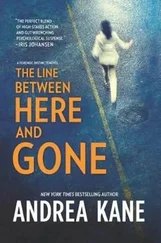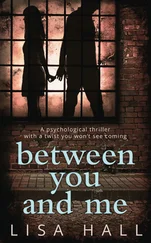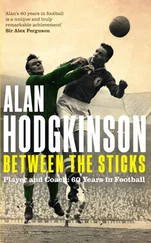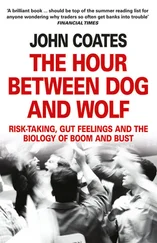His wife Muriel lost two other children through stillbirths. “They never let me see those babies because they were so badly deformed,” she said. “They never even told us what sex they were. There is something very wrong with this family, yet neither Ken nor I have had any history of bad health in either side. It is as though we have been cursed; I find it hard to understand what has happened to us.”
Denise Grove was born with no muscles down the left side of her body. It was a mystifying illness which baffled the best medical brains in Harley Street and consultants in the world famous Great Ormond Street hospital. “The doctors didn’t want to touch me,” said Denise. “They had no idea what was wrong with me and didn’t want to do anything for fear of making things worse.”
But as she grew, it became clear something would have to be done. “There were no muscles in my neck, my left arm, or leg. I was all lop-sided. I just flopped all over the place.”
Finally a surgeon was found at the Orsett hospital in Essex who was willing to take on Denise. “I think he regarded me as a bit of a challenge. He was a wonderful man and he became a good friend. All I can remember of my childhood is being in hospital, that’s all I ever knew. The surgeon tried everything he could think of. He would try one operation, and if it didn’t work he’d try another. Then it would be back to the drawing board.”
In the first 10 years of her life, Denise had six major operations and more than a dozen minor procedures. She was cut open, stitched up, then cut open all over again. Gradually Denise was rebuilt. Muscles were grafted into her neck so she could hold her head up, and her left arm was strengthened. False ligaments were put in her leg which stretched with her as she grew.
She suffered agonies on the way and had to wear big red surgical boots and a plastic brace which she had to wear day and night. Her childhood was a nightmare of taunting children and cruel stares. As she entered her teens, the doctors said they’d done all they could and that only exercise would now help her recovery.
“I never had any boyfriends,” she said. “I lacked the confidence. I worked out a technique where I walked beside my girlfriends and got in the same step as them, so people wouldn’t notice my limp. I was often in despair about the cruel things that had happened to me. I used to cry out and I kept wondering why I was born like this. It’s been awful going through the years with people asking, ‘What’s the matter with you?’ and my having to say, I don’t know.
A lot of people thought I had polio or some other disease. Some people used to shy away from me because they thought it might be contagious! In the end I used to invent things like I was run over by a car, or had had a heavy fall. Anything to stop the questions.”
Denise’s dad Fred Barker, a former Sapper in the Army told her he had been stationed on Christmas Island when a hydrogen bomb was tested. Denise, his first child, was born less than two years after he returned.
“Dad said he’d always blamed himself for the way I was, but I told him not to worry. It’s the Government that should pay for putting so many men in harm’s way in the first place. It couldn’t possibly be his fault. He was only following orders. I don’t know what the future holds for me. I am still a very slow walker and I get very tired, and I am still very weak down my left side. I always have to think about how I walk and have to tell myself to move my left leg in front of my right. I am scared I will end up in a wheelchair.”
Mrs Valerie Billing, from Ripon North Yorkshire, was still recovering from the shock of being told her baby daughter Claire had been born with a deformed leg, when the doctor asked her if she had ever been exposed to radiation.
She recalled: “I expected to be asked what sort of pills I had taken, things like that. But I wasn’t even sure what radiation exposure meant. How could I, a housewife from Ripon, be exposed to radiation? The doctor said they were considering every possibility because they had absolutely no idea why Claire was born that way. He said radiation exposure was just one of many possibilities. I told him in no uncertain terms that I’d never had so much as an X-ray.”
Mrs Billing may not have been exposed to radiation… but her husband Robert had. He was present at three H-bomb explosions on Christmas Island in 1957-58. It was his job to drive an Army land rover taking scientists out to the test sites to collect samples.
He said: “The scientists were covered head to toe in white protective suits and gas masks. All I had on was a pair of shorts and a bush hat to keep the sun off. I must have been contaminated and it looks as though I have passed something on to Claire. There can be no other possible explanation. I think it’s very significant that one of the doctors asked my wife if she had been exposed to radiation. Of course she hadn’t… but I certainly had.”
Gerald Gollop from Wiltshire was serving with the RAF on Christmas Island when he witnessed two explosions. “One of them nearly took the island apart,” he recalled. Mr Gollop’s health was fine… but his wife had to be sterilised after given birth to two badly deformed babies soon after Mr Gollop returned. The first child, a girl, born in 1960, was so badly deformed, the doctors wouldn’t let the couple see her. The child lived for just five hours. Their second child, born six years later, was also deformed, but stillborn “We went through hell,” said Mr Gollop. “I always thought there might be a connection with Christmas Island, but the doctors just said it was an act of God.”
Young Paul Noble was nicknamed the “matchstick boy” due to a strange illness that made his bones so brittle they would break at the slightest knock. The young man by the time he was 19 years old had broken his legs more than 200 times and suffered innumerable broken arms and collar bones. His mother Margaret said: “We first noticed the disease when Paul began to toddle. As soon as he bumped into something, or just fell over, he would break a bone. He was permanently in plaster throughout his childhood. He had so many he didn’t even seem to mind the pain. Paul can’t do strenuous exercise apart from swimming. The muscles in his legs are completely wasted.”
Doctors offered no explanation for Paul’s condition other than, ‘It’s one of those things’, and they didn’t seem to make a connection when his dad John, a former Army Sapper, told them he had been out to Christmas Island where he witnessed five nuclear explosions. Mr Douglas of Leslie, Fife, said: “I always had a gut instinct about Paul; I always thought there was a connection with the bomb tests. But who was I to argue with the doctors? They just wouldn’t listen.”
The case histories piled up. The story had turned into an oddyssey of epic proportions and one that was growing by the day. In just a week thirty-two of those families independently told of the most appalling problems with their offspring. Between them they had a total of 57 children who had either died, been born deformed or suffered other crippling diseases and illnesses.
On the face of it, it was overwhelming evidence that something was seriously wrong with the children of the men who took part in nuclear bomb tests. Their stories resonated with truth.
These were decent, ordinary people with no particular axe to grind or political point to make. They were deeply patriotic and loathed to criticise the services they once so proudly represented.
But they were resentful of the indifference of the Ministry of Defence and the Government to their health problems which they were convinced had been caused through witnessing nuclear bomb tests.
They were also angry at the posturing of ministers whose only experience of atomic bombs had been gleaned from the newsreels. They felt they had been fobbed off, talked down to and treated like troublesome children.
Читать дальше












